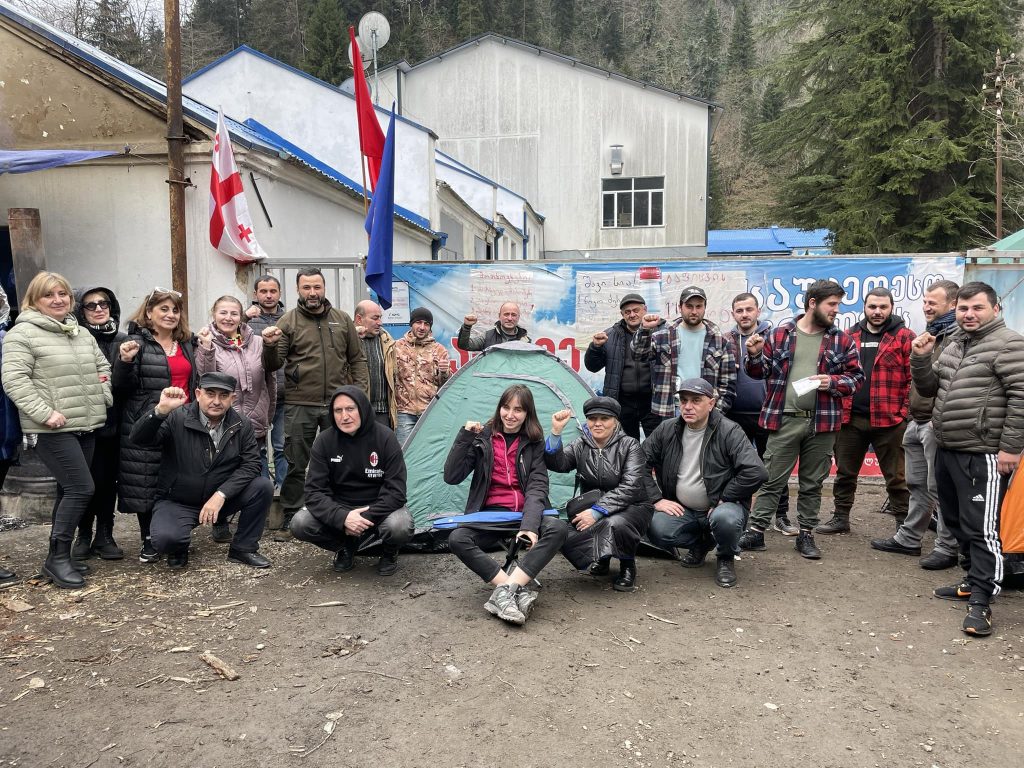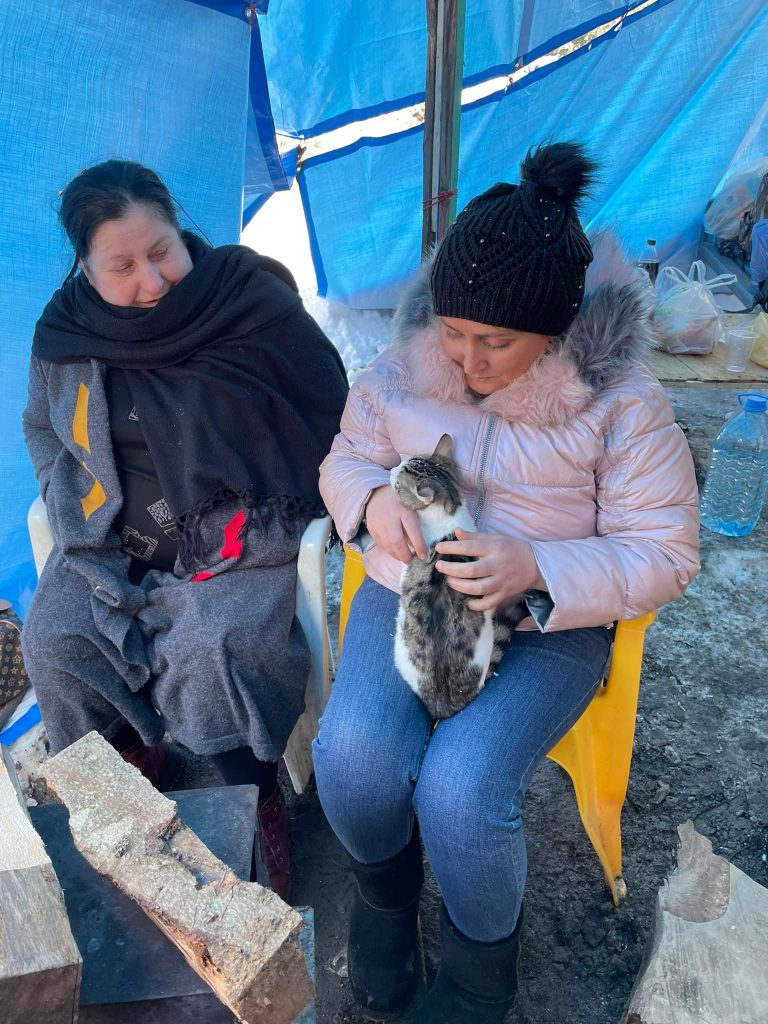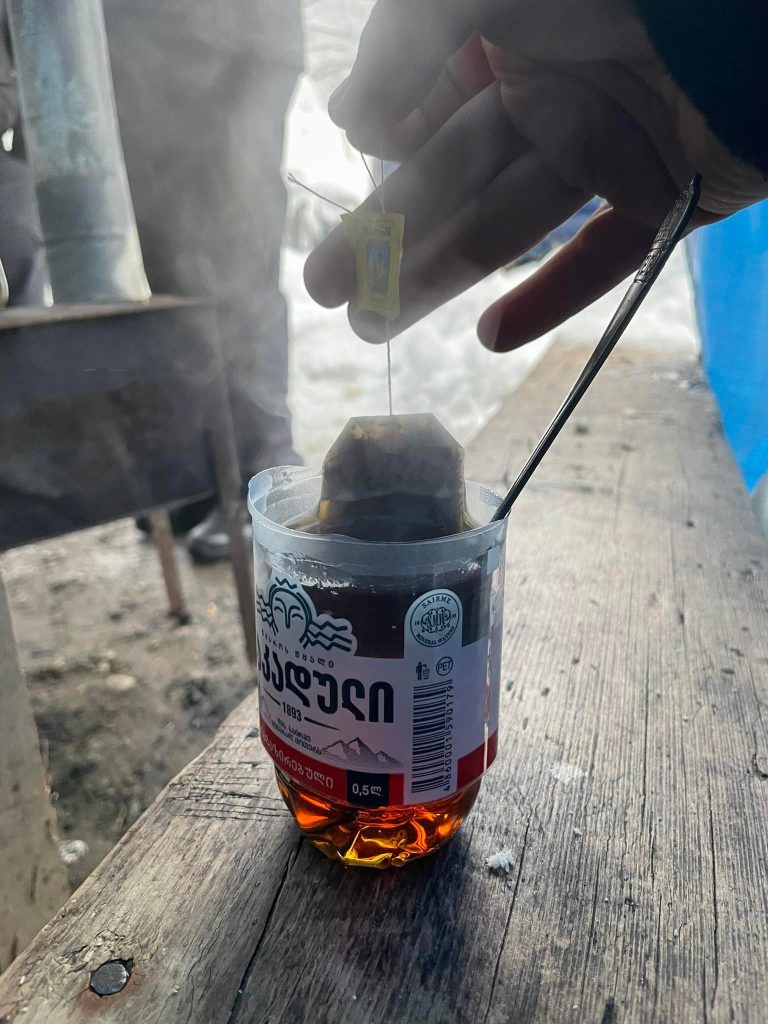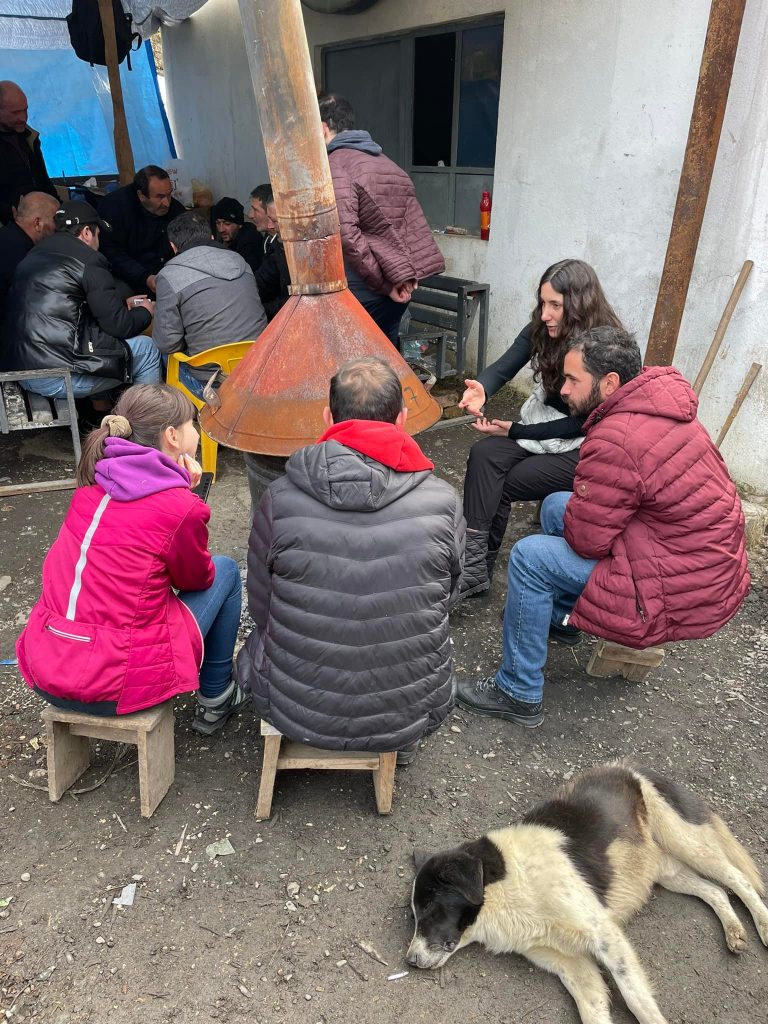On February 23, 2025, information was posted on the Labor Facebook page about one of the points of the agreement reached as a result of the 2023 strike.
Let’s recall one of the significant activities in the history of Labor’s work.

After the unsuccessful completion of a 21-day mediation during the coldest period of 2023, 34 employees of LLC “Sairme Mineral Waters” began their strike on February 13 by camping near the factory gates. They stayed in the vicinity of the factory during the strike.
The strikers demanded:
- Creation of safe working conditions;
- Addition of staff to the cleaning service;
- Improvement of sanitation;
- A 30% increase in salaries;
- Annual indexing of salaries based on the data from Geostat;
- A collective agreement…
The company’s demand was that the head of “Labor,” Giorgi Diasamidze, not be involved in the process, but the employees did not consider this request at any stage of the strike.
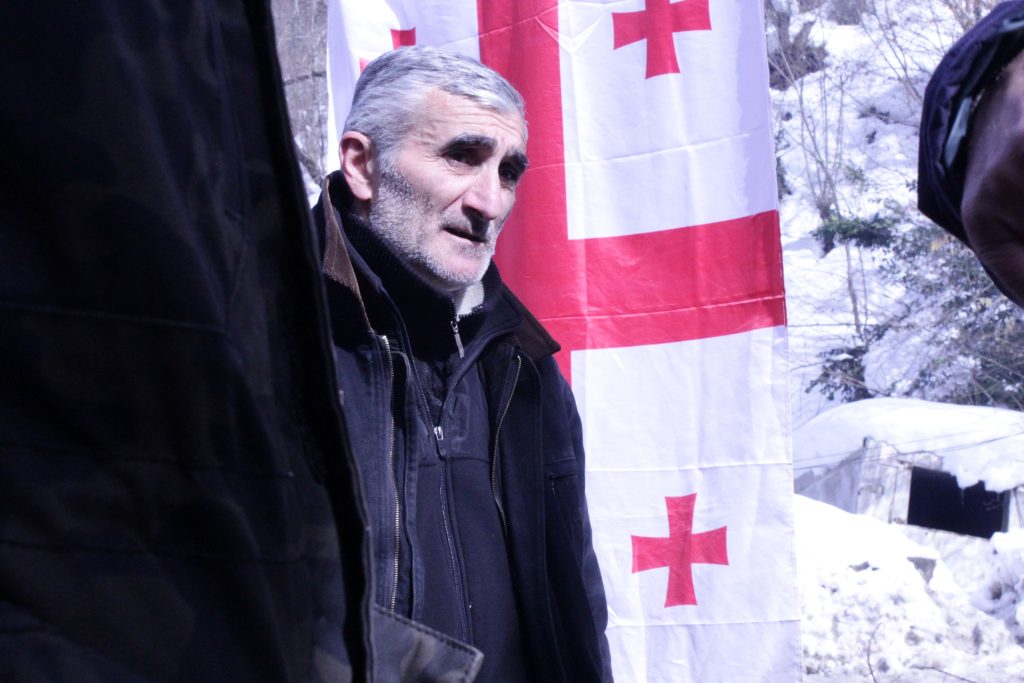
Among the strikers were employees who had worked for decades. They mentioned in talks with representatives of the Public Defender that before joining the union, they didn’t even know what vacation was, and had never used sick leave during their years of employment.
Sairme is located on the northern slope of the Meskheti Range. During the strike, temperatures of -24 degrees were recorded. Despite the weather, the strikers stayed in the factory’s vicinity 24/7.
The first sources of Sairme waters date back to the 1890s. In Imereti, hunters first noticed the frequent visits of deer to the area, which was owned by the aristocracy. According to a popular legend, the water was discovered by brothers who followed the trail of a wounded deer. The water flowed over rust-colored stones, and everything around it was covered in salt. Deer herds took turns drinking from the water and salt. That’s how the place came to be called Sairme.
The protesters constantly spoke about the unsatisfactory infrastructure and life-threatening conditions, such as disorganized electrical wiring and an unregulated freight elevator, where a worker had fallen after an inspection by the state Labor Inspectorate.
Labor’s leadership, based on its experience, believes that the inept, indifferent, and unprofessional attitudes of the Labor Inspectorate often become a reason for strikes.

Despite the long distance and unsafe roads, the flow of people coming in solidarity with the strikers kept them motivated. At a solidarity rally held in front of the factory, civil society, with more determination than the strikers, was involved in a confrontation with the police. During the dispersal, a female striker was injured and had to be taken away by ambulance.


The company, seeking to increase financial pressure, did not pay the strikers their owed wages, but with the help of Labor and its partners, this crisis was somewhat overcome. Over time, the company’s revenue and stability decreased, while the strikers’ patience wore thin.
In response to the policy of ignoring the strike, the strikers did not allow freight transport vehicles to pass through the company’s internal territory by using live barricades. This led to the administrative detention of two strikers.

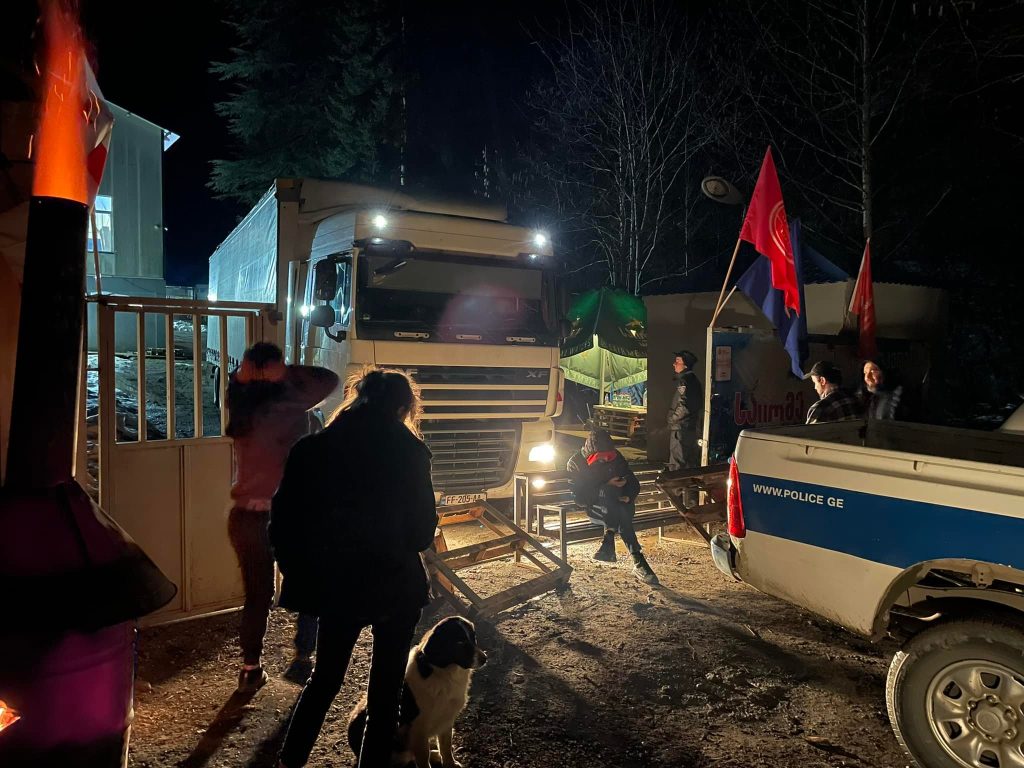
On the 32nd day of the strike, representatives of the company, previously unknown, appeared. Before meeting with the strikers, they had fired three management representatives—those who had provoked the strikers.
Negotiations resumed.
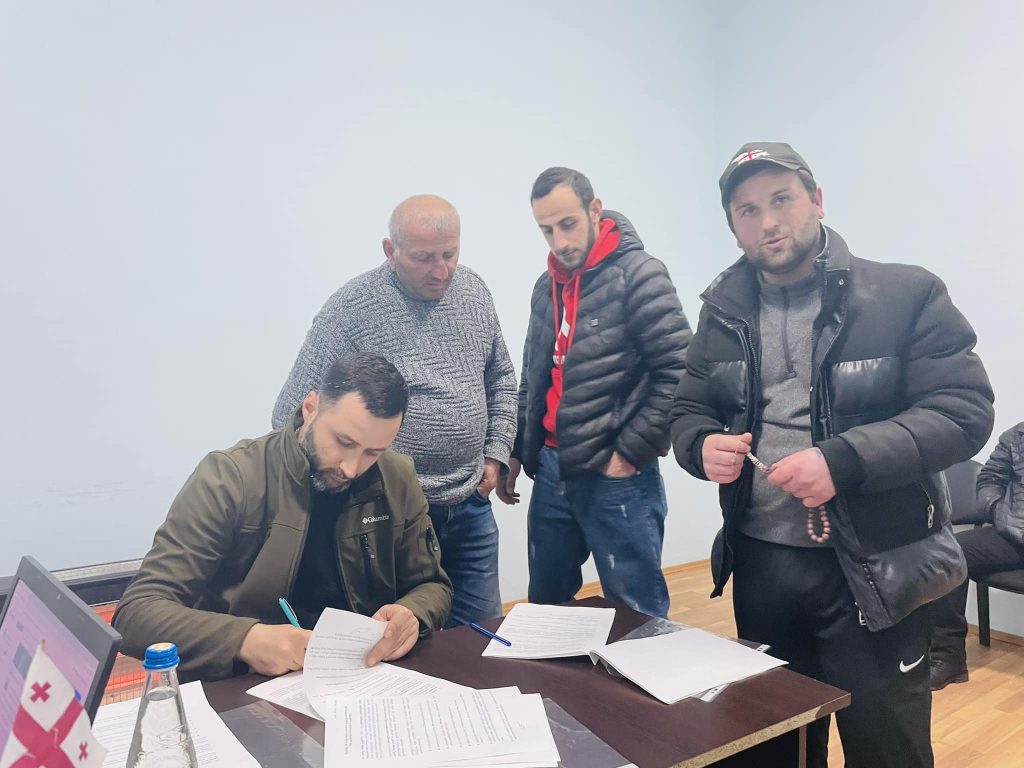
On the 36th day, an agreement was signed by the striking employees, the head of Labor, and the company representatives. It is worth noting that the strikers were compensated for the days they spent on strike.
After the strike, the company and various forces that had opposed Labor found common ground and, through joint efforts, carried out various activities to dismantle the union. They managed to exert influence over some employees, and the union’s membership decreased. These forces continue to try to create a yellow union…
The fight always brings results. However, maintaining the achieved results requires effort.
